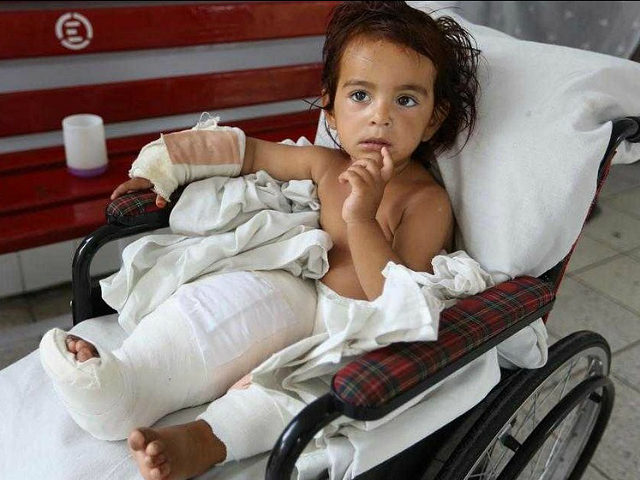Civilian casualties in Afghanistan reached 5,166 during the first half of this year, an all-time high, with children paying a heavy toll, reports the United Nations.
The report by the UN Assistance Mission in Afghanistan (UNAMA) comes as the Taliban is waging an increasingly violent insurgency alongside its rival the Islamic State branch in Afghanistan known as the Khorasan province (ISIL-K/IS-KP).
Despite nearly $70 billion in U.S. taxpayer funds invested into developing the Afghan security troops and more than a decade in training primarily by the American military, the force is still facing capability gaps.
The 5,166 total civilian casualty figure (1,601 deaths and 3,565 injuries) for the first 6 months of this year marks a four percent increase when compared the casualties during the same period in 2015.
UNAMA notes that of the total casualties so far this year, 1,509 (388 dead and 1,121 maimed) were children. That means nearly 3 out of every 10 casualties were children. Women casualties reportedly reached 507 (130 killed and 377 injured).
The Taliban was responsible for nearly half (2,396) of all civilian casualties between January and June of this year and ISIL-K for about two percent (122).
UNAMA attributed 564 casualties primarily to unknown “Anti-Government Elements.”
Fewer than ten of those were linked to the Haqqani Network, Hezb-i-Islami, and the Pakistani Taliban known as Tehrik-Taliban Pakistan (TTP).
Overall, “Anti-Government Elements” were linked to 60 percent (3,082) of all casualties.
Meanwhile, UNAMA reports:
Pro-Government Forces caused 1,180 civilian casualties in the first six months of 2016 (383 deaths and 797 injured) — a 47 per cent increase compared to the same period in 2015, accounting for 23 per cent of total civilian casualties.
UNAMA attributed under half of the civilian casualties from Pro-Government Forces – 47 per cent – solely to the Afghan National Army (557 civilian casualties: 154 deaths and 403 injured), with the majority caused during ground engagements. Pro-Government armed groups and Afghan National Police each caused nine per cent of civilian casualties attributed to Pro-Government Forces while international military forces caused five per cent and Afghan Local Police caused two per cent. The remaining 28 per cent of civilian casualties attributed to Pro-Government Forces resulted from combined operations of Pro-Government Forces.
Of civilians casualties caused by forces loyal to the government, 58 were deemed to be “targeted and deliberate killings.”
Zeid Ra’ad al-Hussein, the UN Human Rights chief, described the children casualties as “alarming and shameful” given that they “represents the highest numbers of children killed or wounded in a six-month period since counting began in 2009.”
“Every single casualty documented in this report — people killed while praying, working, studying, fetching water, recovering in hospitals — every civilian casualty represents a failure of commitment,” added Tadamichi Yamamoto, the head of UNAMA, urging the U.S.-backed government “to spare civilians from the horrors of war.”
The UN agency notes, “The figures are conservative – almost certainly underestimates – given the strict methodology employed in their documentation and in determining the civilian status of those affected.”
UNAMA documented 4,921 civilian casualties (1,592 deaths and 3,329 injuries) during the first half of last year.
The number of civilian deaths in 2016 (1,601) trailed closely to those that occurred in the first 6 months of 2015 (1,592), but the number of wounded civilians have reached a record high this year and that includes 1,121 children.
The 2016 civilian casualties figure is the highest half-year total since the UN began counting in 2009, predominantly driven by the 3,565 injuries.
Overall, an estimated 63,934 civilian casualties, including 22,941 deaths and 40,993 injured, have occurred in Afghanistan since January 2009, when President Barack Obama took office. Obama escalated the Afghan war soon after.
Two days before the report was released on Monday, ISIL-K carried out the deadliest attack in the Afghan capital since the war started in October 2001, killing 80 people and wounding another 231, primarily from the minority Shiite Hazara community.
The 2016 civilians casualties are on track to surpass those that took place in 2015, the highest number recorded since the UN began keeping track.
“Ground engagements continue to cause the highest number of civilian casualties, followed by complex and suicide attacks and improved explosive devices (IEDs),” notes the UN.

COMMENTS
Please let us know if you're having issues with commenting.